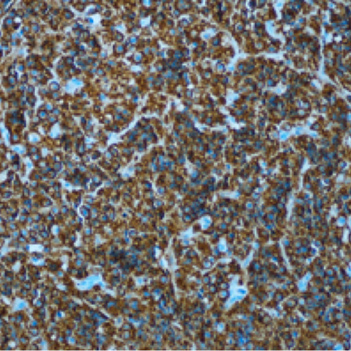Keywords
Multiple myeloma, orbital tumour, plasmacytoma
Abstract
Introduction: Extramedullary plasmacytomas are present in 13% of multiple myeloma (MM) patients. Less than 5% of MM cases are non-secretory. The orbital location is uncommon and a minority of orbital tumours are plasmacytomas.
Description: The patient was a 71-year-old man, with right proptosis, retro-ocular pain and epistaxis with visual acuity 2/10, limitation of upper eye movement and scattered ecchymosis. Blood tests revealed severe anaemia, coagulopathy, increased serum creatinine, LDH and C-RP without improvement after antimicrobial treatment. Peripheral immunophenotyping showed 9.4% of plasma cells with intracytoplasmic clonal ? chains. IgG and ? chains were decreased with normal plasma and urine immunofixation. Orbital CT: retro-orbital superomedial tumour with bone destruction. Histology of the tumour and bone biopsy was consistent with plasmacytoma. The patient was deceased in 2 weeks.
Discussion: MM accounts for 10% of haematopoietic tumours; 7% of cases present with plasmacytomas at diagnosis. Orbital locations are rarely reported (frequently in the temporal region). Proptosis, ptosis and reduced visual acuity are common symptoms. However, orbital pain is less frequent. Most cases of MM demonstrate hypergammaglobulinaemia. Only 5% of MM cases are non-secretory.
The uncommon location, topography, symptom peculiarities and absence of monoclonality led to the diagnostic challenge of this fatal case of MM.
References

Views: 957
HTML downloads: 261
PDF downloads: 520
Published:
2020-01-31
Issue:
2020: Vol 7 No 3
(view)










